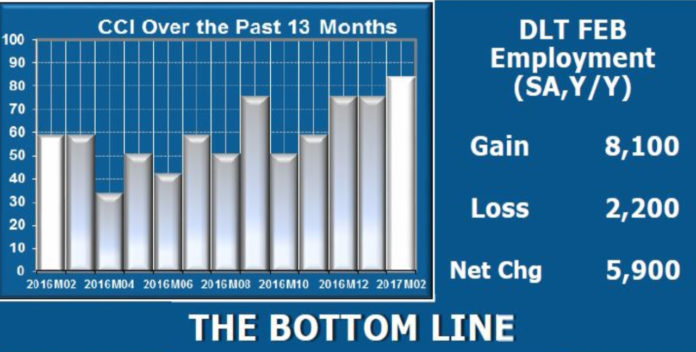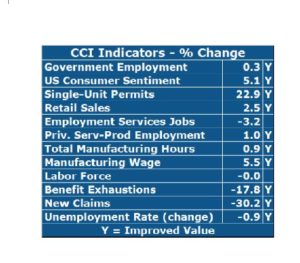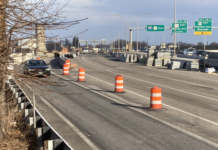
SOUTH KINGSTOWN – Rhode Island’s economy is “definitely accelerating,” according to University of Rhode Island economist Leonard Lardaro, but he still views the labor performance as a “train wreck.”
Lardaro released his monthly Current Conditions Index on Monday, saying 2017 has kicked off on a positive note, as the index hit 83 in February – higher than any value last year. Last February, the value was 58. A CCI reading greater than 50 suggests economic growth and a value less than 50 indicates contraction.
Of the 12 indicators that comprise the CCI, 10 improved, with only employment services jobs falling 3.2 percent over the year and the labor force remaining flat. Employment services jobs, which includes temporary employment and is an indicator of future employment, “continues to disappoint,” as the last time it improved was in March 2016, Lardaro said.
“This indicator should be monitored, since its continuing deterioration suggests a weakening in future employment growth,” Lardaro said.
Lardaro noted that the state’s labor force failed to improve during all of 2016, and also has yet to improve this year. The last time it improved was in April 2014.

“At least the year-over-year change for February was zero,” Lardaro wrote in his report.
On the positive side, total manufacturing hours rose 0.9 percent, and single-unit permits jumped 22.9 percent, marking the third consecutive improvement in this indicator. U.S. consumer sentiment also rose 5.1 percent, its fourth increase in a row, something Lardaro said is likely tied with optimism relating to the presidential election outcome. New unemployment insurance claims, which he described as the most timely measure of layoffs, plunged 30.2 percent, its sixth improvement in the last seven months.
In addition, government employment rose 0.3 percent, private service-producing employment increased 1 percent, retail sales climbed 2.5 percent and benefit exhaustions fell 17.8 percent. The unemployment rate also fell 0.9 percent, but Lardaro said “pay no attention to its move below the U.S. rate.”
February’s jobless rate declined to 4.5 percent, below the national jobless rate of 4.7 percent.
Lardaro said elected officials “obsess over our jobless rate falling below the U.S. rate,” but said they refuse to acknowledge how it got there – mainly from the labor force, “whose level continues to fall off a cliff.” He said state officials remain unprepared for cooling U.S. growth.
“This would be a good time for them to go into crisis mode. The problem is, they don’t know how,” Lardaro said.












